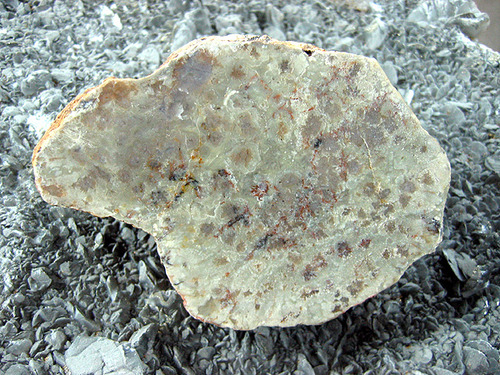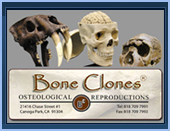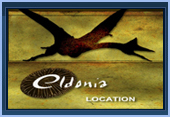일반명 : 공룡똥화석(Utah Dinosaur poop)
지질시대 : 중생대 쥬라기(Jurassic Brushy Basin)
지층명 : Morrison Formation(65 to 150 million years old)
원산지 : Emery County, Utah, USA
크기 : 12 * 8.5 * 4cm
내용 : 거의 모든 사람을 매혹시킬 수 있는 공룡의 분석(糞石)입니다. 화석화 된 분석(糞石)속은 단단한 광물이 침투하여 다양한 형태의 모양과 색상을 나타내고 있는 화석으로 호기심 강한 아이들이나 학술용 및 전시용으로 훌륭합니다. 분석(糞石, Coprolite)의 뜻은 화석화 된 동물의 배설물을 뜻한다. 분석(糞石)의 다른 이름은 장석(腸石 : 맹장의 끝 부분에 생기는 내용물이 굳어진 덩이)이라고도 한다.
초기 쥐라기 암석층인 Lias층(약1억 8,000만년 전)에 나타나는 나선형의 물체가 있었는데, 이 물체는 부드러운 물질이 파충류나 어류의 장(腸)을 통과할 때 형성되었을 것으로 생각되는 형태를 띠고 있음을 관찰한 영국의 지질학자인 윌리엄 버클런드에 의해서 동물의 배설물이라고 처음 밝혀졌으며, 이러한 물질들은 오랜 기간동안 전나무의 구과(毬果)화석 또는 위석(胃石)으로 알려져왔으나, 이 물체의 대부분이 주로 인산칼슘과 탄산염으로 구성되어 있으며 변질되지 않은 뼈의 조각들을 자주 함유하고 있다는 것이 분석결과 나옴으로써 배설물 이라는 학계의 인정을 받았다. '배설물'이라는 의미의 그리스어 'Kopros'와 '암석'이라는 의미의 그리스어'Lithos'를 인용하여 영어명인 'Coprolite' 가 만들어졌다.
유타주에서온 공룡 똥화석
유타의 공룡 똥 화석은 발굴현장에서 가지고 온 진품 공룡 똥 콜렉션으로 약 1억5천만년전 부터 6천5백만년전 까지의 지층을 가지고 있는 유타의 모리슨지층(쥬라기)이다.(참고로 이 지층은 쥬라기와 백악기층이 모두 있지만 화석은 주로 쥬라기 지층에서 발견되고 있음). 공룡화석의 정보를 가장 풍부하게 가지고 있는 모리슨층은 북미 지역의 60만 평방 마일을 차지하고 있으며 여러 주에 걸쳐 있다.
DINOSAUR COPROLITE (POOP!) from Utah
This collection of Genuine Dinosaur poop came from a Utah fossil dig, Emery County, Utah, Jurassic Brushy Basin - Morrison Formation in Utah, 65 to 150 million years old. The Morrison Formation covers 600,000 square miles in several states, the most fertile source of dinosaur fossils in North America.
Coprolites (Dinosaur Poop)
What Fossilized Coprolites Can Tell Us About Ancient Dinosaurs
Herbivorous, house-sized dinosaurs like Apatosaurus and Brachiosaurus had to eat hundreds of pounds of plants and leaves every day to maintain their weight—so as you can imagine, there was a lot of dinosaur poop littering the ground in Jurassic times.However, unless a giant blob of Diplodocus doo happened to fall on the head of a nearby critter, he was unlikely to complain, since dinosaur feces were an abundant source of nutrition for smaller animals (not to mention bacteria).
Dinosaur droppings were also crucial for ancient plant life. Just as modern-day farmers scatter manure around their crops (which replenishes the nitrogen compounds that make soil fertile), the thousands of tons of dinosaur dung produced every single day in the Triassic, Jurassic and Cretaceous periods kept the forests lush and green. This, in turn, helped to maintain the vegetation the dinosaurs feasted on, and then turned into poop, and so on and on in an endless symbiotic cycle.
Dinosaur Poop and Paleontology
As important as they were for the primitive ecosystem, dinosaur droppings have proved equally crucial for modern-day scientists. Occasionally, archaeologists stumble across huge, well-preserved pieces of fossilized dinosaur dung—or “coprolites,” as they’re politely called. By examining these fossils in detail, researchers can figure out if they were created by plant-eating, meat-eating, or omnivorous dinosaurs—and they can sometimes even identify the type of animal or plant that the dinosaur ate a few hours (or a few days) before going Number 2.
Every now and then, a coprolite can help to settle evolutionary disputes. For example, coprolites unearthed recently in India show that the dinosaur responsible fed on types of grass that weren’t thought to have evolved until much later. By pushing back the flourishing of these grasses from 55 million years ago to 65 million years ago (give or take a few million years), these coprolites may help explain the evolution of ancient mammals called gondwanatheres, which had teeth adapted for grazing.
The King of Coprolites
One of the most famous of all coprolites was discovered in Saskatchewan, Canada, in 1998. This gigantic poop fossil (which looks pretty much the way you’d expect) is 17 inches long and 6 inches thick, and was probably part of an even larger chunk of dino dung. Because this coprolite is so big—and contains fragments of bone and blood vessels—archeologists believe it may have come from a carnivorous Tyrannosaurus Rex that roamed North America about 60 million years ago. For most coprolites, though, the exact identities of the dinosaurs that produced them will remain forever a mystery.









































 수량을 선택해주세요.
수량을 선택해주세요.





































